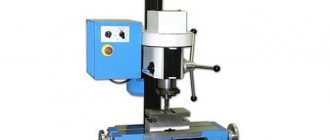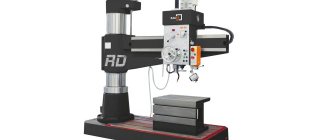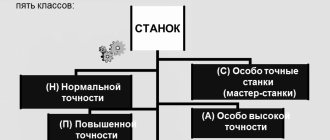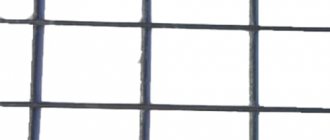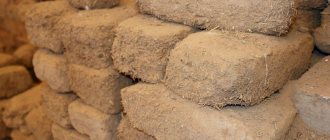The stone-cutting machine is designed for processing construction and finishing materials in accordance with the standards of modern renovation. The simple principle of operation, power and maintainability create potential that no other hand tool has in the basic configuration:
Many people rely on the capabilities of an angle grinder when cutting. This is an acceptable option if a disk of at least 180 mm in diameter is involved and there is no need for exceptional precision in the process. Facing materials - porcelain stoneware, brick and elements made of natural stone, when cut with hand-held power tools, do not have proper accuracy either on the plane or along the edge. They have to be refined, polished and only then polished. Whereas after a stone-cutting machine, in some cases even grinding is not required.
I consider opinions that you should not buy a compact machine for one-time household repair tasks to be frankly amateurish - your angle grinder will be able to make a clean cut on tiles at an angle of 45° only after serious modifications.
The costs of which may well coincide with the cost of not the worst machines. My review will help you get rid of prejudices, make the right choice, enjoy your work and enjoy the end result. To begin with, pay attention to what they promise you the basic selection criteria. Main selection criteria
| Criterion | Index | Sphere of influence |
| Maximum depth of perpendicular cut, mm | 30 — 150 | Determines the permissible thickness of the material processed on one side. If it is possible to change the position of the working unit in height, then the depth of cut for the inverted workpiece is limited only by the distance between the carriage and the disk. |
| Maximum cutting length, mm | 500 – 3000 | Limitation of workpiece length due to machine design |
| Saw blade diameter (external/landing), mm | 200 – 750 /25.4; 30 | In theory, some models allow the use of smaller disks, but then the quality indicators of the product will change, operating efficiency, the level of safety and the working life of the machine will decrease. |
| Disc rotation speed, rpm | 2800 – 3000 | With all other identical characteristics of the two machines, the quality of the cut will be higher where the disk rotation speed is higher. |
| Disc position angle, degrees. | 90 | Only a cut perpendicular to the surface being processed is possible. |
| 90 – 45 | Stepless or two-position fixed position of the working unit with the disk. | |
| Weight, kg | 32 — 370 | As the weight of the equipment increases, the permissible weight of the workpiece increases and the stability of the machine increases. |
Next, I will talk about the stone-cutting machines present on the market, dividing them into three conditional categories:
- household electric tile cutters;
- mobile machines for professional construction activities;
- workshop equipment for industrial stone processing.
A table with the features and scope of popular models will help you significantly narrow down your search for suitable equipment.
Model summary table
| Model | Key Features | Purpose |
| Household tile cutters, electric | ||
| 1. Diam SP-200/0.8 | “Raw” performance of a worthy instrument. Before starting work, it is necessary to remove traces of processing from the milled parts of the drive. | The small cutting depth limits the scope of convenient use of porcelain stoneware, clinker and ceramic facing tiles. |
| 2. Hammer Plr 900 | Convenient assembly, correction of the machine position by adjusting the height of the supports. Removing the legs and installing the machine on a table gives sufficient rigidity to the structure. | The lack of electronic motor protection from overloads and the low power of the machine predetermine the “domestic” mode of operation with ceramic and stone tiles. |
| Professional stone cutting machines | ||
| 3. Elitech SK 350/90R | Sometimes design flaws are expressed in the disc moving to the side by up to 5 mm at the maximum length of the workpiece. | The adjustment system allows for parallel and diagonal cuts at any fixed position of the saw element. |
| 4. Helmut ST350-800 | The simplest system for changing the angle of inclination. | The cutting power and depth make it possible to cut not only facing tiles, but also standard bricks in one pass. |
| 5. HUSQVARNA TS 300 E | Performs longitudinal cuts of tiles 695x695mm, diagonal 400x400mm | Suitable for processing building and finishing materials made of artificial and natural stone. |
| 6.CGW 1-25-1 Compact | The lightest in its class, which is not critical when cutting ceramic tiles, but can affect the quality of cutting heavy elements. The basic package does not include a disk. | Low weight and sufficient power allow the equipment to be used for cutting composite finishing materials and natural stone cladding. |
| 7. FUBAG A-44/420 M | Disassembly of the machine for transportation and storage into 4 parts is carried out without the use of tools. | The combination of power and workbench dimensions allows the machine to be used for professional work with ceramics, porcelain stoneware, concrete elements, brick and natural stone. |
| 8. BATTIPAV EXPERT 400 | Connection via power connector. Supplied without disk and cable. | The low weight and its own wheels allow you to quickly move the machine throughout the facility and cut all types of composite and stone finishing close to the installation site. |
| 9. RUBI DX-250 1400 | The maximum angle of inclination of the disk is 600. To process angles of 00 and 450, an additional mechanical locking of the position of the cutting unit is provided. | Artistic stone workshops, general construction and finishing works, where large-sized workpieces are processed. |
| Industrial stone cutting machines | ||
| 10. SIMA VENUS 200 Mekano | Patented cable protection, precise adjustment of the position of the blade and saw unit. | The main purpose of this class of equipment is cutting small and medium-sized slabs of natural or composite stone. |
| 11. Nuova Mondial Mec Manta LX TB 120-750 MONOFASE | It is not possible to make cuts at an angle of 450 | The equipment is designed to work with stone slabs. Other uses are possible, but with a significant reduction in profitability. |
| 12. EMMEDUE ES-300 A | Semi-automatic equipment with an impressive number of settings | |
The design of each of these machines implements the principle of wet cutting.
We study machines for cutting and sawing bricks: characteristics, reviews and comparison
When constructing any object, it is impossible to do without the use of special technical devices.
Modern builders use a variety of equipment that greatly facilitates and speeds up the process. Among the equipment needed at a construction site are machines for cutting bricks and other materials. They are comfortable, lightweight, and even beginners without experience can handle them. The machine used to cut bricks easily fits in a car, so transporting it will not be a hassle. It is also suitable for cutting any natural stone and building material, be it ceramic, concrete, limestone or the like. Indispensable when processing small blocks of raw materials and facing tiles.
Features of CNC models
Computer numerical control (CNC) models are rarely used in home machining machines due to their inherent simplicity of operation. In addition, electronic control is often introduced with the aim of linking several machines with one controller - obviously, for domestic use such a need is unnecessary. Nevertheless, polishing and engraving models justifiably receive modifications with automation and computer control, allowing individual operations to be performed more accurately. In particular, stone processing on CNC machines provides the ability to correct edges in accordance with a given computer model, which is loaded into the controller panel through a special relay. Moreover, some models can independently determine cutting parameters, focusing on the initial data on the workpiece parameters obtained using sensors.
Cutting machine design
When making brickwork, it is not always possible to use a whole brick, since there are areas where it will not fit completely. The material will begin to violate the integrity of the structure, falling out of its appearance. The one-piece element is suitable only for monolithic, flat surfaces that are durable and reliable.
Problem areas of a brick wall are various transitions and corners, as well as many other elements. To complete all the work correctly, it is necessary to cut the brick. For many years it was done by hand, but modern devices that allow sawing stone or brick greatly simplify human labor.
Widely used specialized machines from well-known manufacturers make it possible to give various materials the required shape. Cutting bricks with a grinder is no longer so popular. The design of the device consists of the following elements:
Some home craftsmen have learned to make brick cutting machines with their own hands. In any case, it is more profitable to purchase professional equipment, since it will serve for many years. In general, the structure of the entire structure is not particularly complex, but it greatly simplifies the construction work of laying building materials with your own hands. The cutting element of the machine is a diamond disk having a certain diameter. It must be of high quality so that all masonry work is carried out at the proper level.
Types of stone processing
Refining stones is just one of the stages of processing gems, which is not mandatory. Before falling into the hands of a jeweler and becoming part of a piece of jewelry, all jewelry stones go through a mandatory processing process. Its methods are selected depending on the basic physical and chemical properties of the mineral: transparency, hardness, presence or absence of a pattern.
Modern processing includes the following methods:
- Rock cutting is carried out on machines equipped with band, circular or cable saws. As an alternative to industrial sawing of mined rock, a laser is used for this purpose.
- Peeling - giving raw materials a preliminary shape.
- Grinding is an intermediate step that allows you to obtain a uniform surface roughness of the stone and better evaluate its shape.
- Polishing - reveals the pattern and structure of the mineral, for which grinding wheels are used with a coating of grinding powders.
- Cutting , together with previous methods, is an integral part of the processing of transparent precious stones, as a result of which it is possible to fully reveal the brilliance and light refraction of minerals.
- Polishing is the final stage, as a result of which the surface of the stone acquires a mirror shine.
- Engraving is a decorative processing option that consists of applying a design to a surface.
Brick cutting machine BALI MEKANO
As an example, we can cite a universal-purpose machine. It is not very large to be included in the industrial category, and can just meet the needs of low-rise construction. The universal device BALI MEKANO fits into the average price category. A machine for cutting bricks, the price of which is about 85 thousand rubles, works out its money one hundred percent. The BALI MEKANO brick cutting machine has a wide range of cutting depth adjustments, so it can handle not only bricks, but also thermal clay and recycled concrete. There are no difficulties in working with standard materials, including brick. The maximum cutting height is 200 mm in one pass. The machine can use diamond discs with a diameter of 400, 450 and 500 mm, and it can be connected to a regular 220 volt network.
Preliminary preparation
Before starting work, you should check the softness of the stone to see if it is suitable for polishing. To do this, take a pocket knife and try to carefully scratch the surface. If there is a white mark left or a grainy mark, the stone is not suitable for work; polishing will make it loose. If there is a shiny mark left, the stone is hard and you can work with it.
When checking, you must hold the knife away from you and do not press it too hard - it may slip.
If it is necessary to polish a found stone, first it is given the desired shape using a chisel and hammer. If the stone is large, with large ridges, the ridges will need to be chipped away. At the end, you need to rinse it and remove all dirt.
Source ratatum.com
DIY brick cutting machine
Let's talk about how to make a brick cutting machine at home. The time has long passed when masons worked with their hands, without tools to facilitate the construction process.
Nowadays the market offers a huge selection of tools that allow even a beginner to work quickly and efficiently.
Naturally, not everyone has enough money for all the tools, and why buy when you can make them yourself. Moreover, the material for the machine is available; it can be assembled literally from what lies under your feet. For example, from an iron corner for a bed.
It is also important that creating something with your own hands is very interesting! Since doing it yourself is often tantamount to creating a tool for yourself. And what can you compare the satisfaction you get from work to when you manage to realize your ideas and thoughts?
- 1 Design of a brick cutting machine
- 2 Alternative options
- 3 Safety precautions
- 4 Brick cutting machine, video 4.1 We recommend reading:
Brick cutting machine design
The design of the machine looks like a circular saw, only in smaller sizes. Of course, there are differences in how the cutting blade is mounted.
When designing a machine, you can use existing diagrams and drawings with exact dimensions.
Or you can create something fundamentally different from others, according to your own ideas and calculations. The main thing is that the resulting result does its job and is safe to maintain.
What is stone refining
Natural minerals with high levels of transparency and rich color are very rare. Most of the mined raw materials have minor defects, uneven or pale color. To improve the quality and characteristics of jewelry stones, methods for refining them have been developed. Unlike natural gems, refined samples are cheaper. Moreover, the accompanying documents must indicate whether the mineral has been refined.
Refining is the processing of already cut crystals or natural untreated stone
It consists of a targeted physical and chemical effect on raw materials, as a result of which it is possible to achieve an increase in the key consumer qualities of minerals.
For example, jewelers have noticed that by heating clear or lightly colored amethyst crystals, which have a low market value, they can produce sought-after yellow stones that resemble citrines. Minerals with zonal coloring, called ametrines, have become popular: when amethyst is heated from just one side, the resulting crystal is yellow at one end and purple at the other.
The main methods of refining stones that are accepted in the jewelry industry and are considered acceptable:
- Annealing (heat treatment). As a result of exposure to high temperatures, many minerals acquire a more saturated color. This method is also used to remove unwanted tints (such as blue in rubies) or inclusions (such as rutile in sapphires).
- Oil treatment - used in cases where it is necessary to hide cracks. The refining process consists of injecting oil with a similar refractive index into the split, from which air and water have been pumped out. As a result, the cracks become almost invisible.
- Treatment with epoxy resin , like oiling, improves the transparency of samples and increases their strength.
- Radioactive irradiation is the main method for producing naturally occurring blue topazes, colored diamonds and quartz. Depending on the type of mineral, X-ray, ultraviolet, gamma radiation or exposure to a flow of energetic particles (neutrons, protons, electrons or alpha particles) is used.
- Coating allows you to obtain crystals with an unusual color, for example, after applying a thin film of precious metals to the surface of topaz, you get mystic topaz, characterized by iridescent tints.
Types of stone cutting machines
Brick cutting machines are divided into various types. Thus, there are double-head and single-head machines, stationary and manual, with mechanical or pneumatic clamping, with and without a cooling system.
The cutting machine consists of a bed, a cutting element, a brick feeding system and a process control system. The cutting element is a circular saw and chain, which are powered by an electric motor. To perform loading and unloading operations, special loading rings are used.
Since brick is highly durable, the machine must be durable and reliable. And for its production, high-strength metal is used: steel or cast iron of special grades. They allow the process to be carried out efficiently, provide reliable control, and absorb vibration during operation. Brick cutting machines can operate on 220V or 380V. The first option is more common and is used in small workshops and households. The second option is more powerful equipment, used for mass work.
The machines are widely used in country or rural construction, for interior finishing work, and in the construction of brick kilns. Using the equipment, it is possible to perform cutting with high speed and accuracy. The evenness and precision of the cut allows you to obtain an even seam between the joining surfaces. Cutting bricks on the machine has a high degree of operator safety.
Choosing the required grinder
When we have decided on the disk, we need to choose the most suitable angle grinder.
By power
The first thing you should pay attention to when choosing an angle grinder is power. The main thing to understand here is that the rule “the more, the better” does not work for this tool. Increased power leads to an increase in the price and weight of the angle grinder. Therefore, before choosing an angle grinder, you need to decide on the appropriate diameter of the cutting disc.
Optimal power of an angle grinder for different diameters:
- 115 mm – 750 W;
- 125 mm – 1100 W;
- 180 mm – 2000 W;
- 230 mm – 2200 W.
Because When working with stone, heavy metal discs are used; you can take an angle grinder with a small power reserve. For example, for a diameter of 230 mm, an angle grinder with a power of up to 2500 W is suitable.
By number of revolutions
Typically, the manufacturer selects the optimal rotation speed, depending on the diameter of the disk:
- 115 mm – 12000 rpm;
- 125 mm – 11000 rpm;
- 180 mm – 8000 rpm;
- 230 mm – 6000 rpm.
The above parameters are optimal for cutting work. For grinding work, 2–6 thousand revolutions are required. If you need a universal tool, you can purchase an angle grinder with adjustable speed.
Extra options
Because When working with stone, a lot of dust is generated, it makes sense to choose an angle grinder with dust protection. Although people's reviews say that an angle grinder without dust protection is also suitable if you clean it on time.
The following options are more related to increasing the safety of the tool in order to avoid accidents:
- Starting current limitation . Reduces the load on the engine by smoothly increasing the speed when turning on the tool. This extends the life of the machine and enhances safety - there will be no sudden jerks when turning on, and accordingly the grinder will be easier to hold in your hands.
- Overload protection . Prevents engine damage when the disk jams by reducing the load. This avoids strong jerks when jammed.
- Engine brake . Allows you to stop the disc faster after turning off the tool. This reduces the risk of injury to other people if the worker, for example, turns off the machine and leaves it somewhere.

